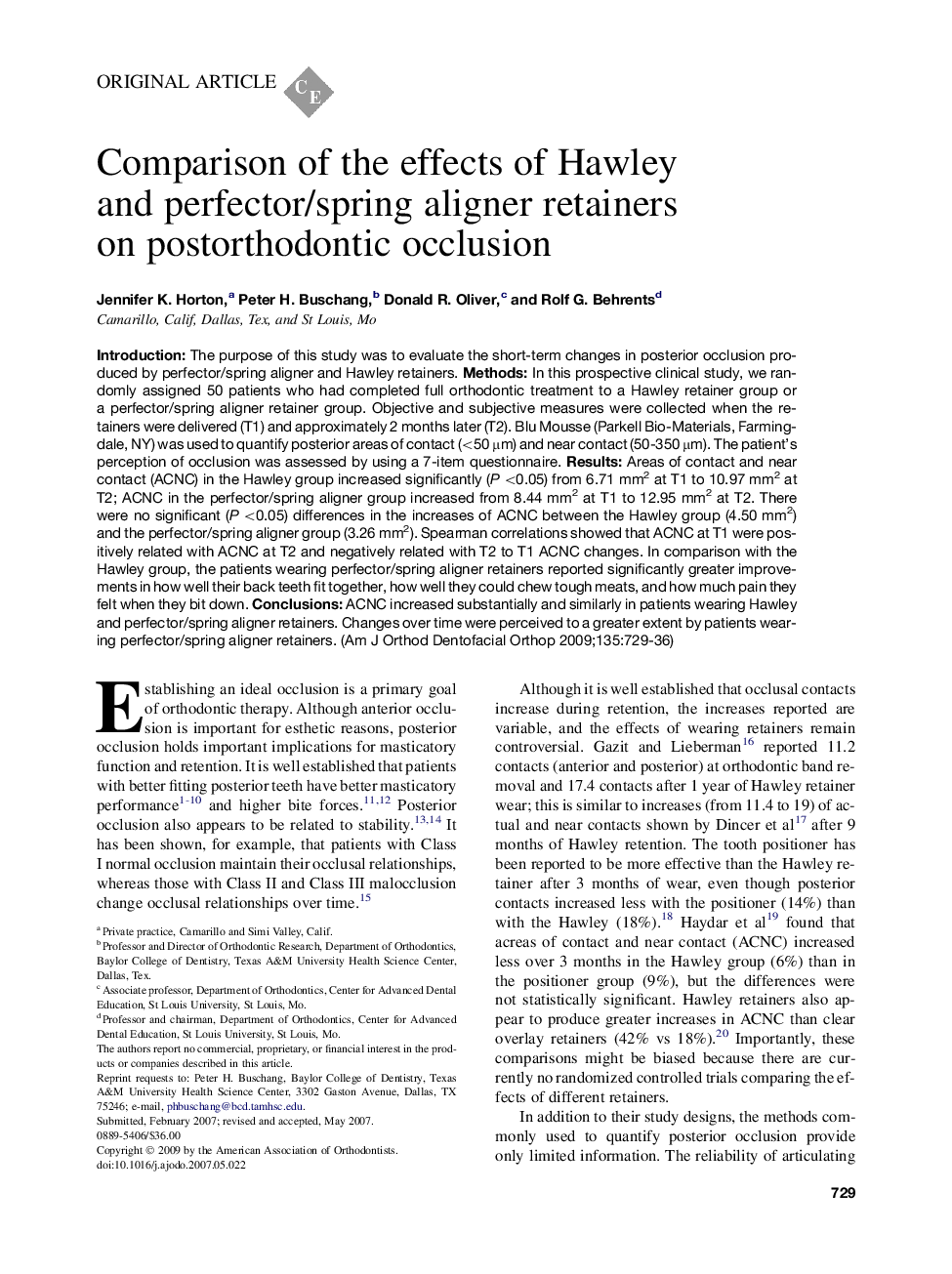| Article ID | Journal | Published Year | Pages | File Type |
|---|---|---|---|---|
| 3118241 | American Journal of Orthodontics and Dentofacial Orthopedics | 2009 | 8 Pages |
IntroductionThe purpose of this study was to evaluate the short-term changes in posterior occlusion produced by perfector/spring aligner and Hawley retainers.MethodsIn this prospective clinical study, we randomly assigned 50 patients who had completed full orthodontic treatment to a Hawley retainer group or a perfector/spring aligner retainer group. Objective and subjective measures were collected when the retainers were delivered (T1) and approximately 2 months later (T2). Blu Mousse (Parkell Bio-Materials, Farmingdale, NY) was used to quantify posterior areas of contact (<50 μm) and near contact (50-350 μm). The patient's perception of occlusion was assessed by using a 7-item questionnaire.ResultsAreas of contact and near contact (ACNC) in the Hawley group increased significantly (P <0.05) from 6.71 mm2 at T1 to 10.97 mm2 at T2; ACNC in the perfector/spring aligner group increased from 8.44 mm2 at T1 to 12.95 mm2 at T2. There were no significant (P <0.05) differences in the increases of ACNC between the Hawley group (4.50 mm2) and the perfector/spring aligner group (3.26 mm2). Spearman correlations showed that ACNC at T1 were positively related with ACNC at T2 and negatively related with T2 to T1 ACNC changes. In comparison with the Hawley group, the patients wearing perfector/spring aligner retainers reported significantly greater improvements in how well their back teeth fit together, how well they could chew tough meats, and how much pain they felt when they bit down.ConclusionsACNC increased substantially and similarly in patients wearing Hawley and perfector/spring aligner retainers. Changes over time were perceived to a greater extent by patients wearing perfector/spring aligner retainers.
